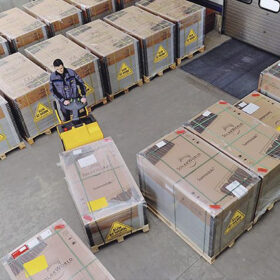Turkey launches tender for 800 MW of solar
Turkey’s Ministry of Energy and Natural Resources has launched a tender for 800 MW of solar across six proposed projects. The deadline for applications is Jan. 27, 2025.
Researchers analyze wind cooling effect for 5.9 MW rooftop PV array
Researchers have analyzed how wind speed and direction affect the cooling of a rooftop PV plant with 10,806 panels. They say that winds from behind were less effective due to the roof slope and the minimal gap between the panels and the roof, but wind from other directions could contribute to a cooling effect of up to 7 C.
Turkey targets 22.6 GW of solar by end of 2025
The Turkish Ministry of Energy and Natural Resources’ 2025 budget proposal sets a target of 22.6 GW of installed solar by the end of next year, up from around 18.8 GW this year. The ministry also plans to increase the share of domestic resources in electricity production, while reducing the share of natural gases.
Assessing floating PV costs across Europe
Researchers have analyzed the viability of floating PV in terms of net present value, internal rate of return, and LCOE. They included 25 European countries in their work, including Germany, the United Kingdom, Spain, and Italy.
Solar PV flooring for residential, commercial use
Turkey-based Ankara Solar Energy launched its own brand of walkable PV flooring for residential and commercial projects. Its 30 W and 120 W square panels with anti-slip glass front covers are sold with a supportive pedestal system, and are now available for the European and U.S. markets.
TUI powers hotels with solar plants in Turkey
Travel and tourism company TUI recently started operating three new solar plants in Turkey, totalling 15 MW, to supply power to eight hotels. It plans to power more hotels in the country with additional solar plants.
Sinovoltaics updates map of European solar module manufacturing sites
The latest report on the supply chain for European PV module production provides the status of 121 solar manufacturing sites, including closures and capacity on hold. It maps plants that produce PV modules, cells, wafers, ingots, polysilicon, and metallurgical-grade silicon.
Solimpeks presents air-to-water heat pump for residential, commercial applications
The Turkish manufacturer said its Varm BCP heat pump has a heating capacity of 3 kW at 20 C outdoor temperature and a coefficient of performance ranging from 3.62 to 4.48.
EU set to dig into raw materials supply
The European Union has drawn up new regulations to boost the domestic mining of raw materials and support production of renewable energy products and materials at home. Will it be enough to incentivize investment, or will Europe trail other major economies, such as the United States and China?
US solar prices double European costs amid regulatory challenges
The requirements of measures such as the Uyghur Forced Labor Prevention Act (UFLPA) mean that solar panel prices in the United States can be twice as much as in Europe.









